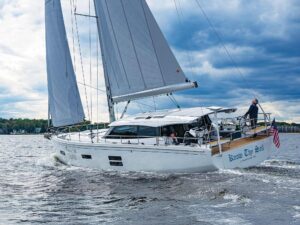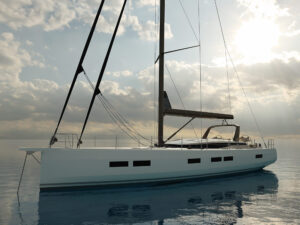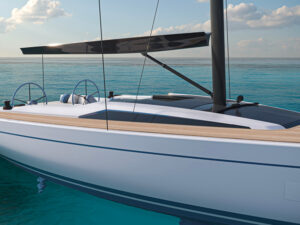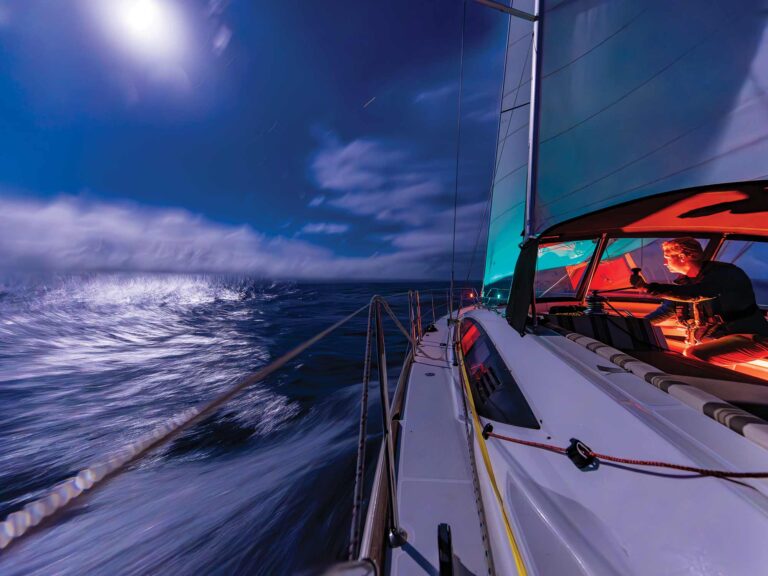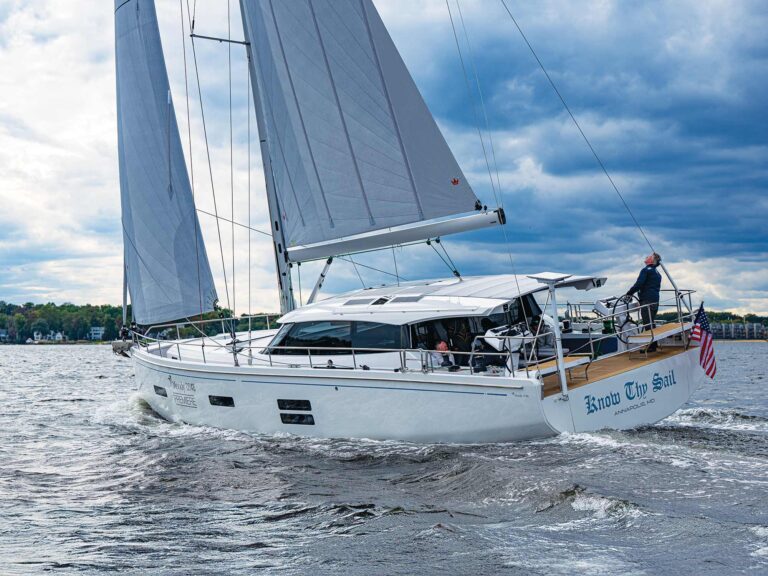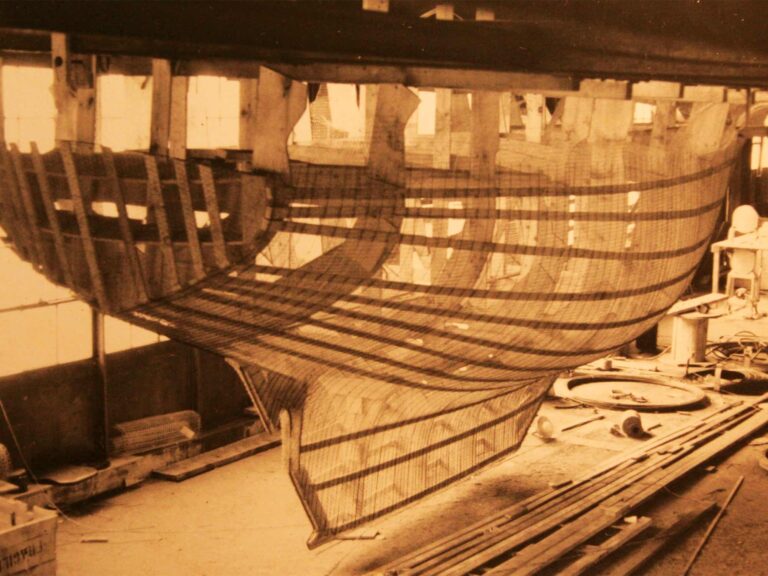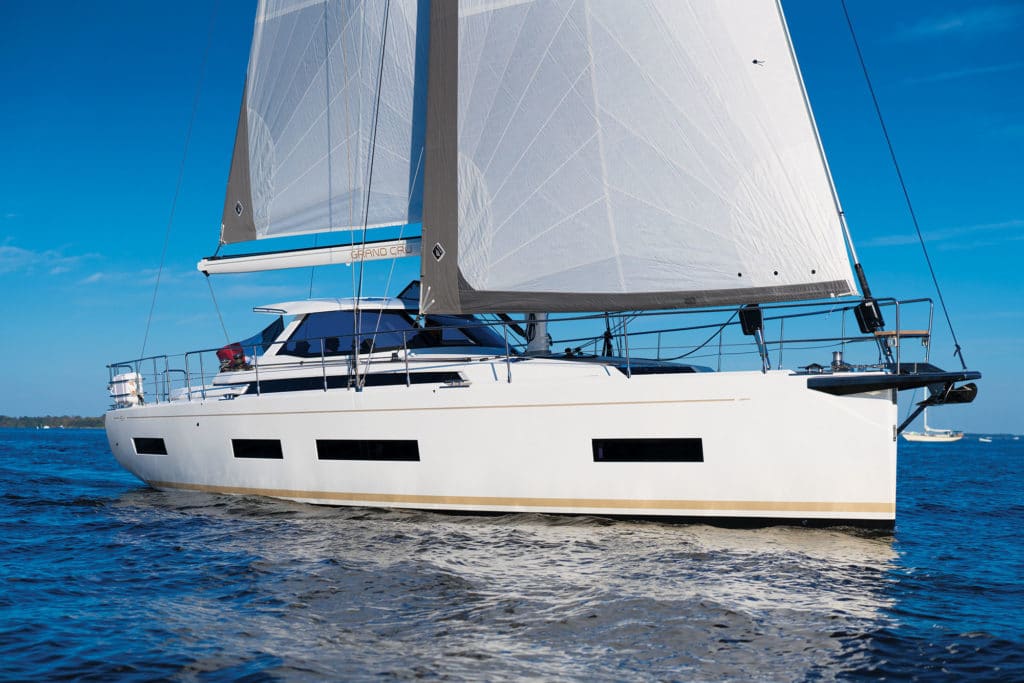
The hardest part of writing a review of a boat like the Amel 50 is beginning it. Where to start? Do you launch into the legacy of Frenchman Henri Amel, the ex-war hero who launched his legendary, eponymous La Rochelle boatyard in 1964? Should you focus on the yard’s celebrated attention to detail, and the fact that every Amel always comes fully equipped for bluewater voyaging, right down to the plates and cutlery? Or is it best to first address the specifics of this rangy new 50-footer, and the fact that it’s a true departure for Amel, the company’s first sloop—after a long string of ketch-rigged thoroughbreds—in over two decades? Seriously, what’s the hook to get this party started?
It’s probably best to just state the obvious: The Amel 50 is très cool, and oh-so remarkable in oh-so many ways.
In the 2020 Boat of the Year competition, the Amel was runner-up to the X-Yachts X46 in the Full-Size Cruiser 45 to 55 Feet class. It was the most heavily contested division in the competition, one that the judging panel agonized over during extensive deliberations. The fact that the sea trials for both boats took place in vastly different conditions—the X-Yacht had an ideal, 12-to-14-knot breeze, while the Amel was tested in a zephyr—may have affected the outcome. But the panelists had high praise for the 50-footer. Here are a few of their observations.
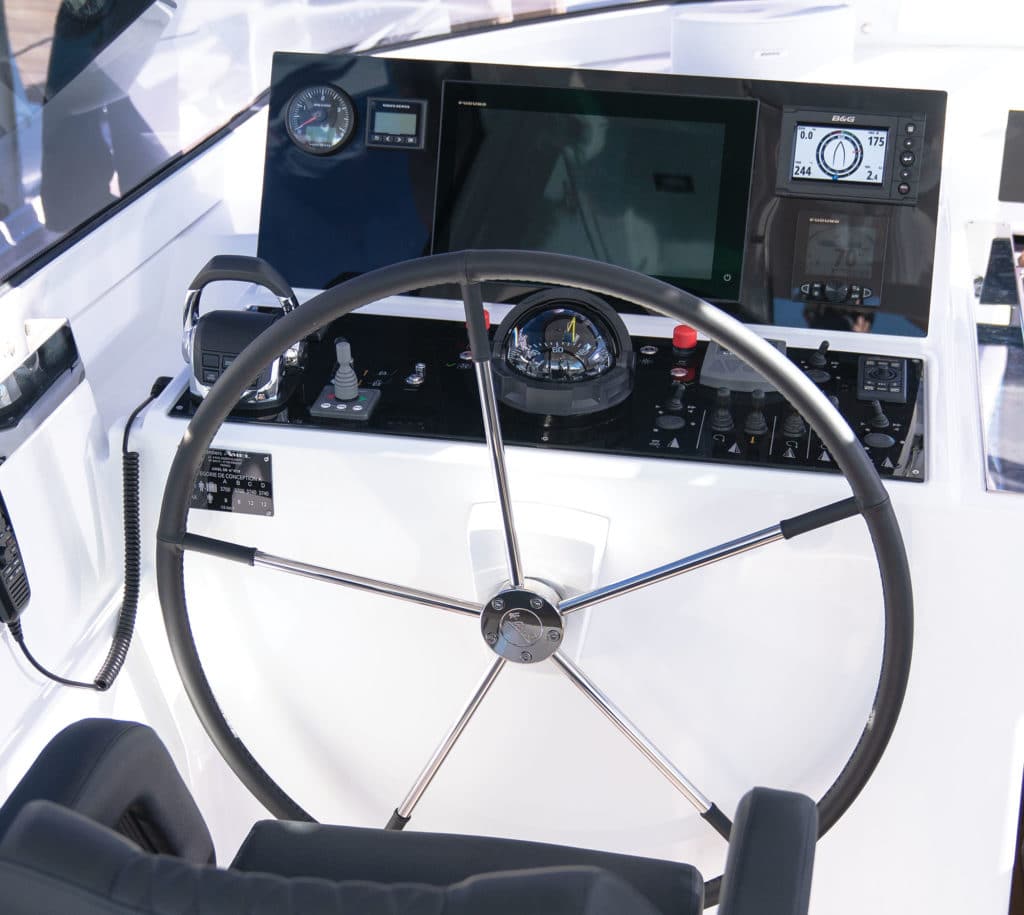
Dan Spurr: “Amel has long been one of the only worldwide companies to offer what is essentially a ‘ready-to-cruise’ boat. Some of the details include secured floorboards, four watertight bulkheads, bulkheads tabbed to the hull and deck, and aft-deck stowage for the dinghy. We all also liked the 24-volt electrical system and the solid, tubular handrail rather than wire lifelines. The boat can be operated from the security of the cockpit, which has a windshield and hardtop, as with many solo offshore ocean racers. Admittedly, one of my colleagues didn’t like this feature, feeling it isolated the helm from feeling the weather and conditions. The boat is not inexpensive, but it also seemed to have one of the highest-quality finishes of anything we judged.”
Ed Sherman: “The Amel 50 is truly an oceangoing globe-trotter. With a signature, watertight forward crash bulkhead; a centrally located ‘sea chest’ (and manifold system) with a single through-hull (for seawater intake for the engine, Onan generator, air-conditioner and desalinization system) to easily isolate a leak and shut it down; and a global shore-power system that can deal with 50 or 60 hertz and 120 or 230 to 240 volts, Amel has designed a boat that will cover you wherever you travel. As with some of the other larger boats, the DC side of the electrical system is 24 volts. By doing this, the builder can save considerable weight just in the wiring, and create a more efficient low-voltage electrical system.”
Ralph Naranjo: “I felt the fit and finish was at a higher level than I’ve seen on earlier Amels. Her hull was vacuum-infused, with solid glass below the waterline and foam core above it (and in the deck). Attention to detail in areas that could be seen belowdecks revealed good structural engineering and careful finish work. The design decision with the keel to go with iron rather than lead ballast affects both seaworthiness and long-term maintenance; lead could’ve improved the righting moment and enhanced her upwind sailing ability. This is a well-built vessel that, to me, is more of a motorsailer than a traditional cruising sailboat; it will spend much time under power. As such, good attention has been given to the engine room and related equipment such as the drivetrain and generator.”
There’s your overview. Now let’s focus in on some of those details, with the caveat that you’d require a book, not a mere magazine article, to delve deeply into all of them.
In both profile appearance and the design’s overall execution, the major, overriding feature of the Amel 50 is the prominent deckhouse with its enclosed steering station, the actual seat for which is a comfy armchair. From this cozy perch, to port, and with the wide array of instruments, joysticks and related controls an arm’s length away, you can basically operate the entire boat. For instance, you can bump the throttle and/or the retractable bow thruster with one hand. The electric winch for the in-mast furling main and twin Profurl headsail furlers are right there, as is the Lewmar windlass control, autopilot buttons, B&G chart plotter and so on.
The deckhouse is doubly important in that, by raising the hefty floor panel to which the cockpit table is fastened, you have wonderful access to the deep engine/technical room, which houses not only the 5-cylinder, 110-horsepower Volvo engine (coupled with the three-blade Varifold prop, this is a significant power plant), but also the chargers, inverter, watermaker, etc. This is an ideal setup for maintenance and inspection, and twice as nice in that you don’t have to lift the companionway stairs or rearrange staterooms to get at everything. Big props.
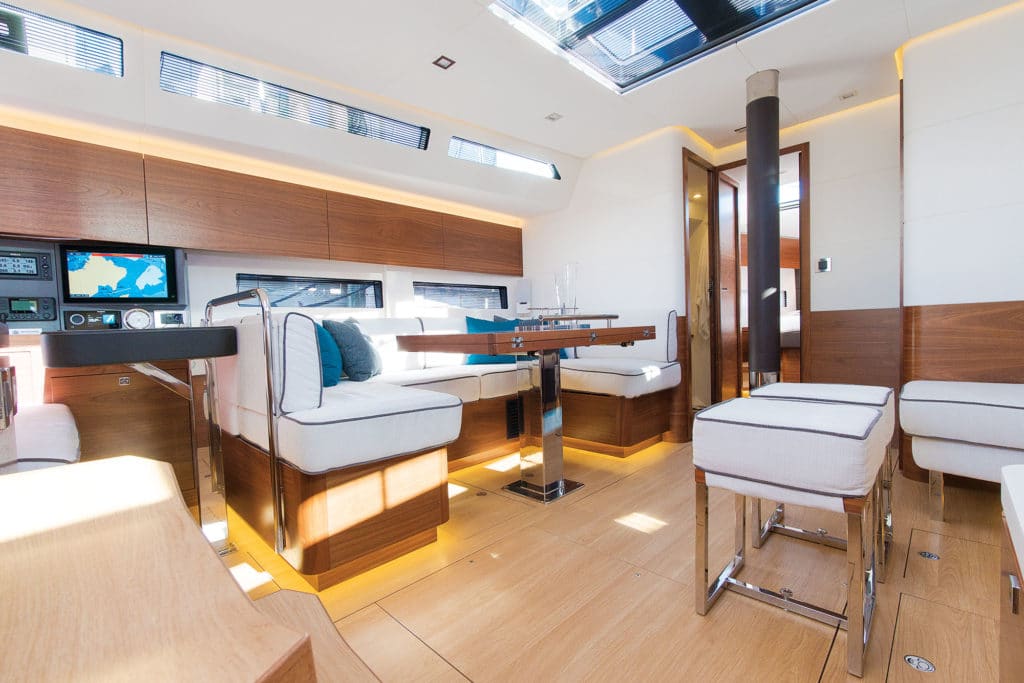
Down below, I’m not at all exaggerating when saying I’ve never seen a more efficient use of space on any cruising boat. Storage lockers are simply everywhere; there are a half-dozen alone under the floorboards, and many more under the settees (as well as a freezer) in the very open, comfortable saloon (bathed in natural light with hull windows, coachroof ports and overhead hatches).
To port of the companionway, there’s a tidy navigation station with a long, ridiculously comfortable settee. To starboard, down two steps, is the excellent straight-line galley that also provides the passageway to the owner’s stateroom aft. The huge berth there lifts up for yet more stowage beneath it, and also reveals the inspection port for the rudder (one of the many unusual details that are practically everywhere). There is, of course, a well-executed head and shower, not to mention the washer/dryer. Forward, the guest stateroom is equally comfortable; there’s also another cabin with bunkbeds ahead of the saloon, with lee cloths that will make sweet sea berths.
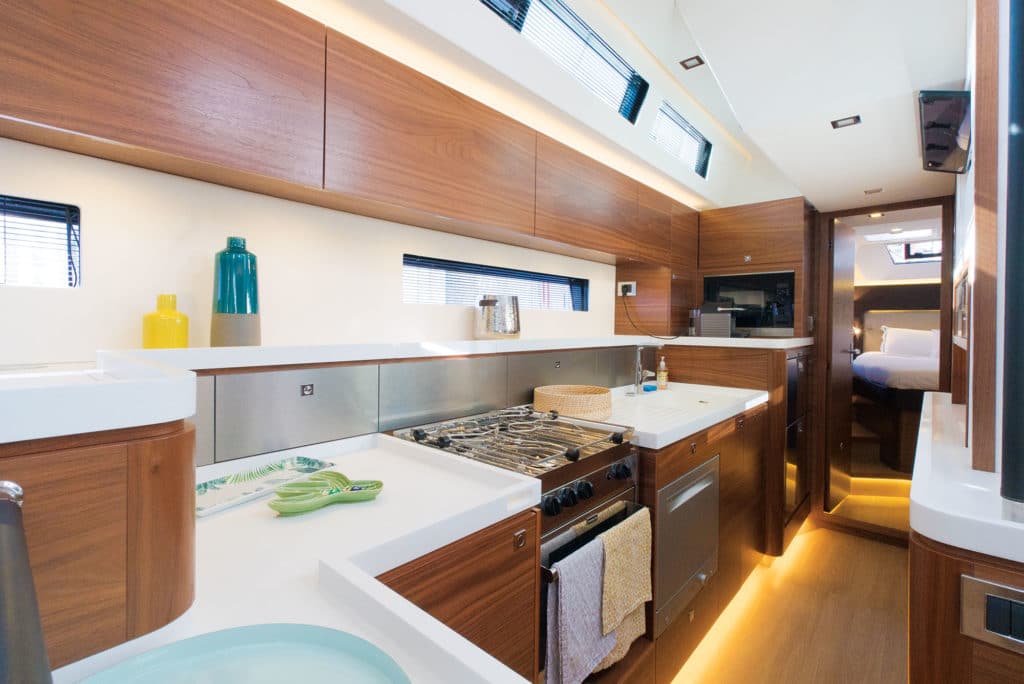
Topside, there’s a big sail locker forward and a single bow roller on a stainless-steel sprit, from which a code zero or asymmetric cruising chute can be set. Aft, the generous drop-down swim platform unfolds from the transom; yet another nifty feature is the passerelle that is stashed in the lazarette. Our aforementioned test sail was conducted in 5 to 6 knots of light Chesapeake Bay wind, but the boat still acquitted herself well, skimming along at better than 3 knots. It would be a lot of fun to put her through the paces in a blow.
Concluding an Amel 50 review is much easier than launching one. The summation is simple. It’s a superb yacht, one that will take its lucky crews wherever in the watery world they wish to go.
Herb McCormick is CW’s executive editor.
| LENGTH OVERALL | 50’10” (15.51 m) |
|---|---|
| WATERLINE LENGTH | 47’7″ (14.50 m) |
| BEAM | 15’8″ (4.79 m) |
| DRAFT (Standard/Performance) | 7’0″ (2.15 m) |
| SAIL AREA (100%) | 1,360 sq. ft. (126 sq. m) |
| BALLAST | 11,800 lb. (5,352 kg) |
| DISPLACEMENT | 49,000 lb. (22,226 kg) |
| BALLAST/DISPLACEMENT | 0.24 |
| DISPLACEMENT/LENGTH | 170 |
| SAIL AREA/DISPLACEMENT | 18.3 |
| WATER | 160 gal. (600 L) |
| FUEL | 170 gal. (650 L) |
| HOLDING | 42 gal. (160 L) |
| MAST HEIGHT | 73’10” (22.5 m) |
| ENGINE | Volvo 110 hp |
| DESIGNER | Berret-Racoupeau |
| PRICE | $1,100,000 |
Les Chantiers Amel
914-381-5900


